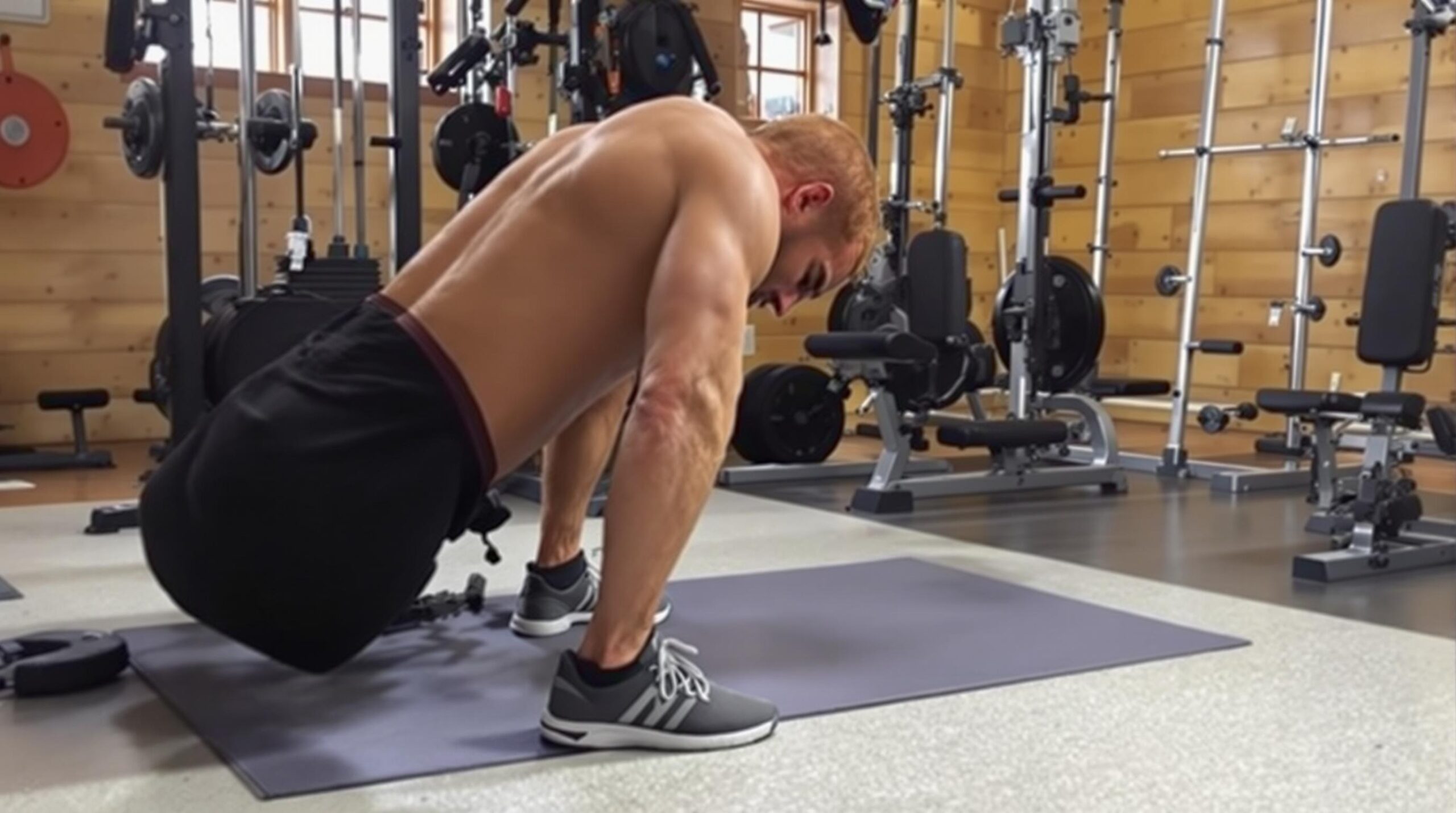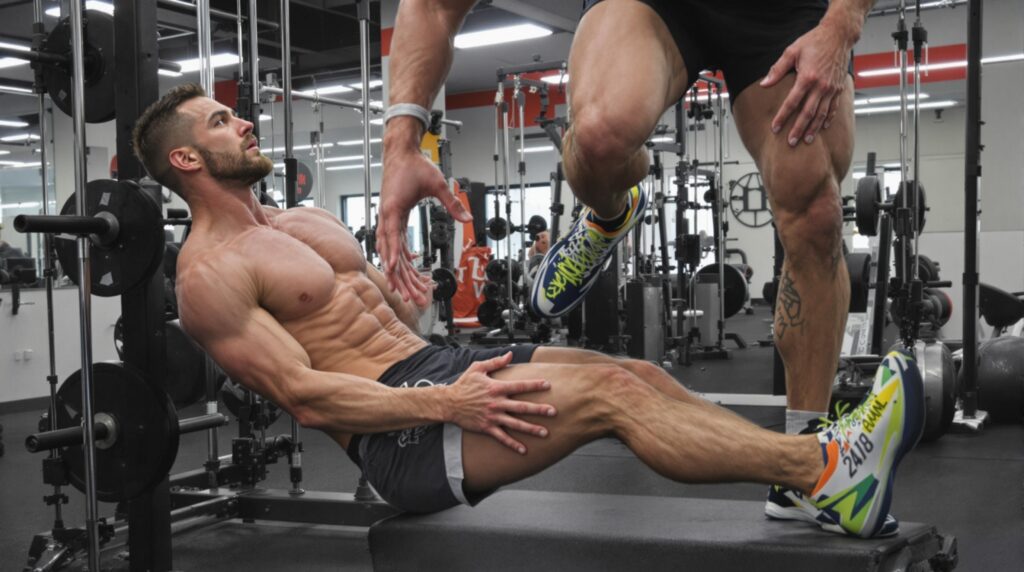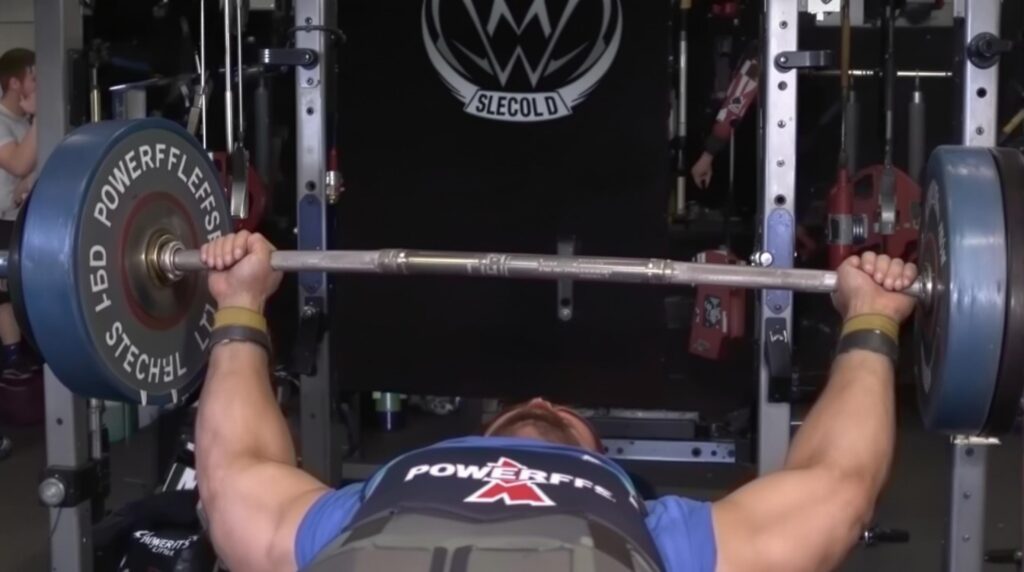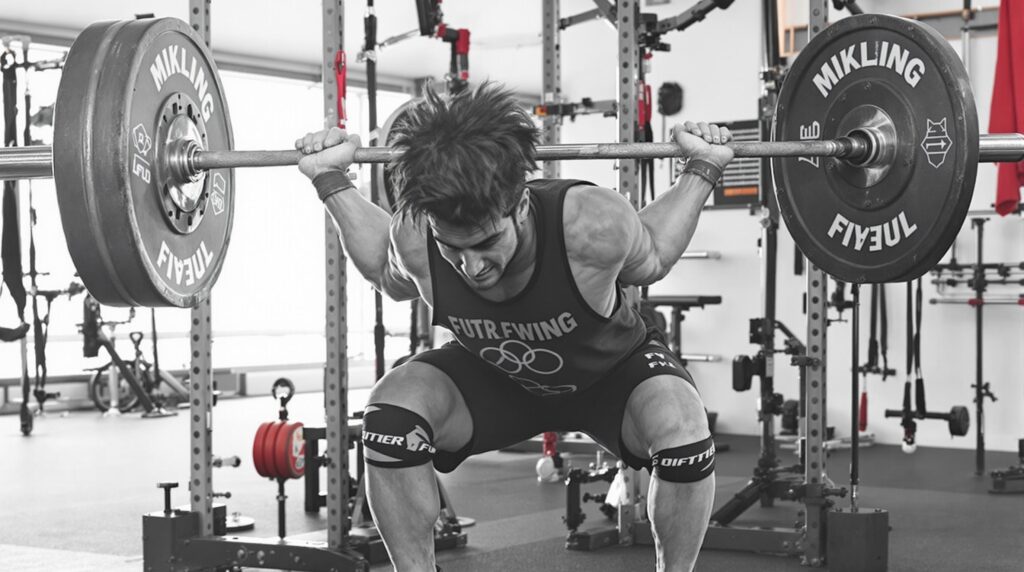Building stronger legs requires more than just showing up on leg day – it demands strategic planning and proper exercise selection for optimal results. A good leg workout combines compound and isolation exercises with progressive overload principles to stimulate growth in your quadriceps, hamstrings, glutes, and calves effectively.
Key Takeaways
- Train legs 2-3 times weekly with 15-25 total sets for maximum hypertrophy
- Prioritize compound movements like squats and deadlifts that activate 70-80% of lower body muscles
- Vary between strength protocols (80-90% 1RM, 3-6 reps) and hypertrophy protocols (65-75% 1RM, 8-12 reps)
- Implement progressive overload by increasing weight by 2.5-5% weekly or adding 1-2 reps every two weeks
- Don’t neglect proper warm-up and recovery techniques to reduce injury risk by up to 32%
The Science Behind Effective Leg Training
Research shows that optimal leg development comes from training your lower body 2-3 times per week. This frequency allows for proper stimulation while providing adequate recovery time between sessions. According to studies, athletes who trained legs twice weekly saw 60% strength gains compared to just 38% from those training once weekly.
The foundation of any good leg workout should emphasize compound movements that activate multiple muscle groups simultaneously. These exercises not only build functional strength but also trigger greater hormone release, particularly testosterone and growth hormone, which support overall muscle development.
Recovery periods of 48-72 hours between intense leg sessions are critical for growth. This timeframe allows the muscle recovery process to complete while preventing overtraining. I’ve found that properly structured workout plans that account for this recovery window deliver better long-term results.

Building Your Foundation: Essential Compound Movements
Any effective leg workout routine needs to prioritize compound movements. These exercises form the backbone of your training by activating the greatest number of muscle fibers. Compound lifts account for 70-80% of lower-body muscle activation, making them essential for overall development.
Start with barbell back squats, aiming for 5 sets of 6-12 reps. This fundamental exercise targets the quadriceps, glutes, hamstrings, and core simultaneously. Follow this with Romanian deadlifts for 4 sets of 8-10 reps to emphasize posterior chain development.
Research comparing squats and deadlifts over a 6-week period showed remarkably similar improvements in athletic performance, with jump height increasing by 4.9% from squats and 5.5% from deadlifts. This demonstrates that both exercises deserve prominent placement in your routine.
Other key compound movements include:
- Bulgarian split squats (3 sets of 10 reps per leg)
- Leg presses (4 sets of 10-12 reps)
- Walking lunges (3 sets of 10-12 reps per leg)
- Hack squats (4 sets of 8-10 reps)
Specialized Training: Balancing Strength and Hypertrophy
To maximize leg development, alternate between strength-focused sessions and hypertrophy-oriented workouts. For strength building, work with 80-90% of your one-rep maximum (1RM) for 3-6 reps per set with longer rest periods of 3-5 minutes. This approach prioritizes neural adaptations and absolute strength gains.
For hypertrophy (muscle growth), adjust to 65-75% of 1RM for 8-12 reps while emphasizing time under tension. Adding a 3-second eccentric phase (lowering portion) to each rep significantly increases muscle fiber recruitment and growth stimulus.
Studies show that incorporating sprint intervals can increase type II muscle fiber hypertrophy by 12-15% in trained athletes. These fast-twitch fibers have the greatest potential for growth and power output. I recommend structuring different sessions for different goals:
- Monday: Strength focus (heavy squats, deadlifts)
- Wednesday: Hypertrophy focus (higher reps, shorter rest periods)
- Friday: Power/athletic focus (jump squats, sprint intervals)
This variety prevents plateaus and ensures complete development of your leg musculature. Ultimate workout routines often incorporate this type of strategic periodization for maximum results.
Progressive Overload: The Key to Continuous Growth
Progressive overload remains essential for ongoing development. Without continually challenging your muscles with greater demands, growth quickly stagnates. Implement progressive overload by increasing weight by 2.5-5% weekly or adding 1-2 reps per set every two weeks.
Tracking your progress is crucial. Research shows that lifters who maintain detailed training logs achieve 23% greater strength gains over 12 weeks compared to those who don’t track their workouts. This simple habit creates accountability and allows you to identify effective strategies for your unique physiology.
For isolation exercises, drop sets provide an excellent method of overload. For example, with leg extensions, start with 50kg for 10 reps, then immediately reduce the weight by 10kg and perform another set to failure. Continue this pattern for 3-4 drops to thoroughly fatigue the muscle.
Remember to incorporate deload weeks every 4-5 weeks of hard training. Reducing volume and intensity by approximately 40-50% during these weeks prevents overtraining and allows for complete recovery before the next training block.
8-Week Leg Development Program
Here’s a comprehensive 8-week program designed to maximize leg development through progressive phases:
Phase 1 (Weeks 1-4): Foundation Building
- Day 1: Back squats (5×6), leg press (4×10), leg curls (3×12), calf raises (3×15)
- Day 3: Deadlifts (4×8), Bulgarian split squats (3×10/leg), leg extensions (3×12), standing calf raises (3×12)
Phase 2 (Weeks 5-8): Intensification
- Day 1: Pause squats (4×4 with 2-second hold), hack squats (4×8), Romanian deadlifts (3×10), seated calf raises (4×15)
- Day 3: Deficit deadlifts (5×5), walking lunges (3×12/leg), leg curls (4×10), calf press on leg press (3×20)
This program strategically alternates between quad-dominant and hamstring/posterior chain-focused days, allowing for adequate recovery while maintaining training frequency. The split routine enables you to focus on specific muscle groups with greater intensity than a full-leg approach would permit.
You’ll notice both compound and isolation movements are incorporated in a specific sequence – starting with the most demanding exercises when energy levels are highest and finishing with isolation work to completely fatigue the muscles. This approach is supported by research showing comprehensive workout programs yield better results than random exercise selection.
Isolation Work: Finishing Touches for Complete Development
While compound movements form the foundation of your leg training, isolation exercises provide crucial finishing touches for complete development. These movements allow you to target specific muscles that might lag behind or need extra attention.
Isolation exercises are most effective as finishers with 3 sets of 12-15 reps, creating metabolic stress that triggers hypertrophy through different mechanisms than heavy compound lifts. For hamstring development, seated leg curls (3 sets of 8 reps) and glute bridges (3 sets of 12-15 reps) have proven particularly effective.
Don’t neglect calf training, which requires higher frequency (3x/week) with varied foot positions to target all portions of the gastrocnemius and soleus. Try these positions:
- Toes pointed straight (neutral) – targets overall calf development
- Toes pointed inward – emphasizes outer calf head
- Toes pointed outward – targets inner calf head
Pay attention to ankle mobility, as research shows poor mobility limits squat depth, reducing quad activation by up to 27%. Regular mobility work can dramatically improve your training effectiveness.
Injury Prevention and Recovery Optimization
A proper warm-up routine is non-negotiable for leg training. Research demonstrates that dynamic warm-ups reduce injury risk by 32% while improving squat performance by 9%. Before heavy leg work, perform this 10-minute sequence:
- Leg swings (forward/back and side-to-side): 15 per leg
- Bodyweight squats: 20 reps
- Walking lunges: 10 per leg
- Hip flexor stretches: 30 seconds per side
- Light leg extensions: 15 reps
Post-workout recovery techniques are equally important. Foam rolling has been shown to decrease delayed onset muscle soreness (DOMS) by 40% and enhance flexibility. Spend 5-10 minutes foam rolling your quads, hamstrings, IT bands, and calves after training.
Pay careful attention to technique to prevent injury. Avoid knee valgus (knees caving inward) during squats, which increases ACL strain by 50%. Maintain proper alignment by driving your knees in line with your toes throughout the movement.
Nutritional Support for Maximum Leg Growth
Nutrition plays a crucial role in supporting leg development. Post-workout nutrition is particularly important – consuming 20-40g of whey protein with 40-80g of carbohydrates within 30 minutes of training boosts muscle protein synthesis by 33%, according to research.
Maintaining adequate daily protein intake is essential. Aim for 1.6-2.2g of protein per kg of bodyweight daily, spread across 4-6 meals to optimize muscle recovery and growth. For a 180lb (82kg) individual, this means consuming 131-180g of protein daily.
Consider these evidence-based supplements to enhance leg development:
- Creat



